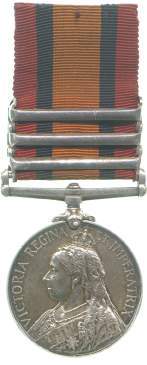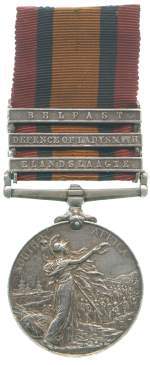Current Location: In storage
Maker(s)
Mint:
London
Ruler:
Victoria (1837-1901)
Artist:
Saulles, George W. de
Ruler:
Victoria regina et imperatrix
(With the title of)
Entities
Categories
Description
During the 1830s and 1840s several Dutch republics had been established outside the British Cape Colony in South Africa, among which were Transvaal and the Orange Free State, all now in modern South Africa. Transvaal was annexed briefly by the British but its independence re-established in the First Boer War.
In the 1880s however the discovery of vast gold reserves in Transvaal brought large numbers of foreign settlers, largely British, across the border, and an attempted coup at the instigation of Cecil Rhodes in 1895. Military escalation followed, negotiations failed and the two Boer republics, convinced that the British intended annexation, declared war in the Cape Colony in October 1899.
The immediate result was the siege of British troops in Ladysmith, Mafeking and Kimberley, while field forces attempting to come to their relief were defeated in several open battles by Boer contingents. Kimberley, the first town to be relieved, could open its gates only in mid-February; Mafeking, famously, had to hold out until May. The Boers moved to cut off the British garrisons from potential help, and a force blocking the railway line at Elandslaagte was defeated by British forces on October 21, but long supply lines and unknown opposition convinced the British commander to withdraw despite his victory.
A relief force sent to Ladysmith was roundly defeated by Louis Botha in January 1900 while attempting to cross the Tugela River at Colenso, and again at Val Krantz on 5 February. After a portion of the Boer forces were penned up in a siege at Paardeberg by General Lord Horatio Kitchener and captured, Ladysmith was finally relieved on 15 February, by which time a fuller British offensive was driving the Boers back. Their resistance in the field was more or less quelled by May 1900, but Louis Botha fought one last set-piece battle at Bergendal, also known as the Battle of Belfast after the larger town nearby, where, outnumbered four-to-one, the Boers were driven out, thereafter to abandon conventional engagements. Their forces maintained a bitter and obdurate guerilla campaign in several areas of the two Republics until mid-1902, when a surrender was finally agreed.
This medal was awarded to Private P. Green of the Manchester Regiment, who appears, unlike most of those who fought at Elandslaagte, to have later got through to Ladysmith and joined the defenders there, and finally to have fought against Botha's 5,000 at Bergendal. Lester Watson acquired his medal at some point before 1928.
Notes
History note: Gift of L. Hoyt Watson; ex Lester Watson Collection, acquired before 1928
Legal notes
Given by Lester Watson through Cambridge in America, 2009
Measurements and weight
Diameter: 36.4 mm
Weight: 45.4 g
Acquisition and important dates
Method of acquisition: Given
(2009)
by
Watson, Lester
Dating
Production date:
AD 1902
Materials used in production
Silver
Techniques used in production
Struck
Inscription or legends present
Inscription present: Bust of Victoria facing left with veil
- Text: VICTORIA REGINA ET IMPERATRIX
- Location: Obverse
- Type: Design
Inscription present: Britannia in foreground facing right holding standard and waving wreath over army marching along shore, with ships offshore in background
- Location: Reverse
- Type: Design
References and bibliographic entries
Identification numbers
Accession number: CM.1421-2009
Primary reference Number: 141515
Watson Catalogue: 333
Ordering: M-0304
Previous object number: LW.0304
Stable URI
Audit data
Created: Saturday 6 August 2011
Updated: Monday 25 March 2024
Last processed: Wednesday 14 May 2025
Associated departments & institutions
Owner or interested party:
The Fitzwilliam Museum
Associated department:
Coins and Medals





